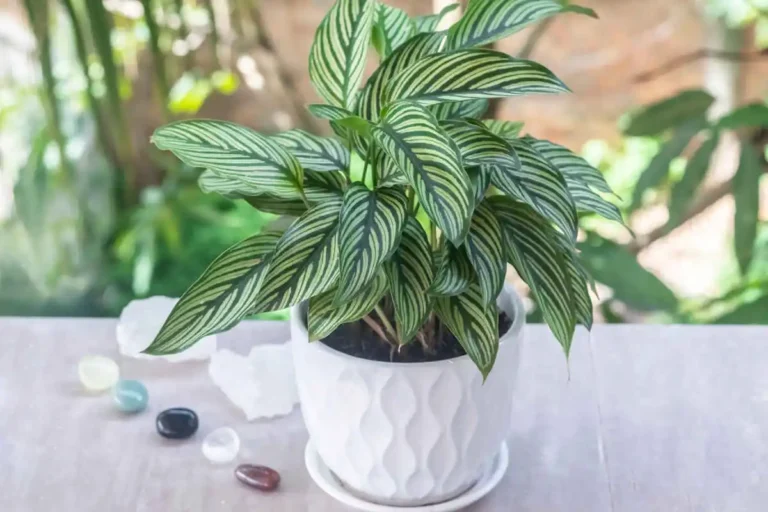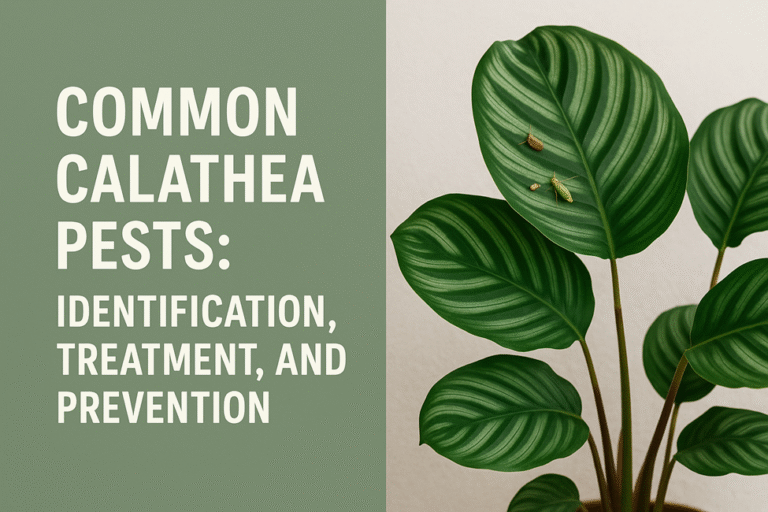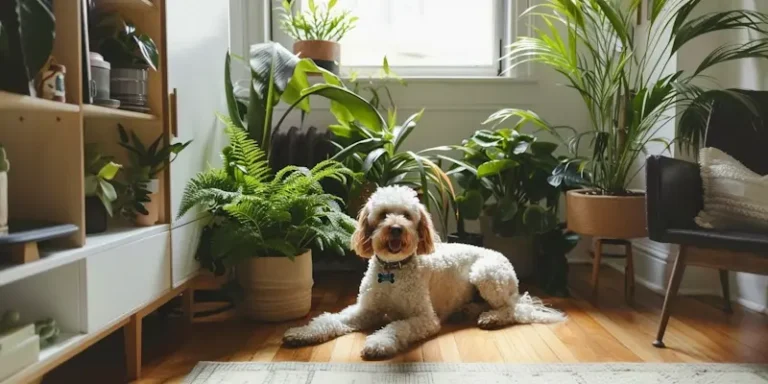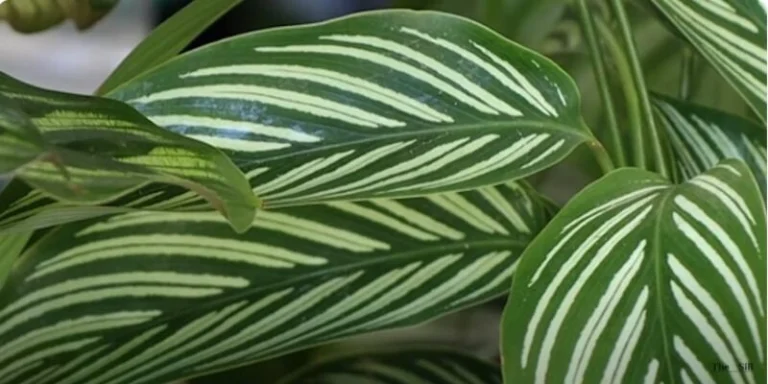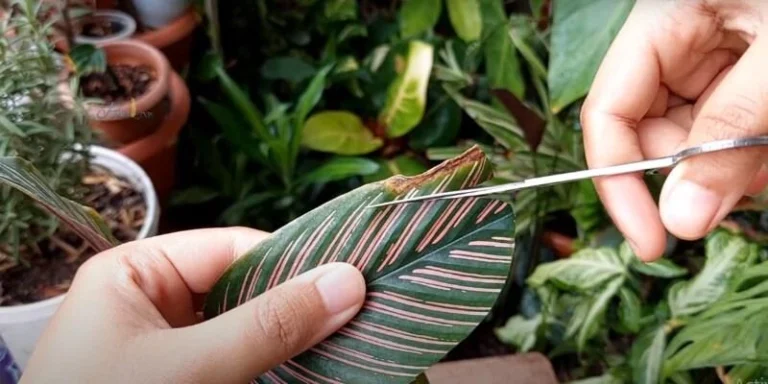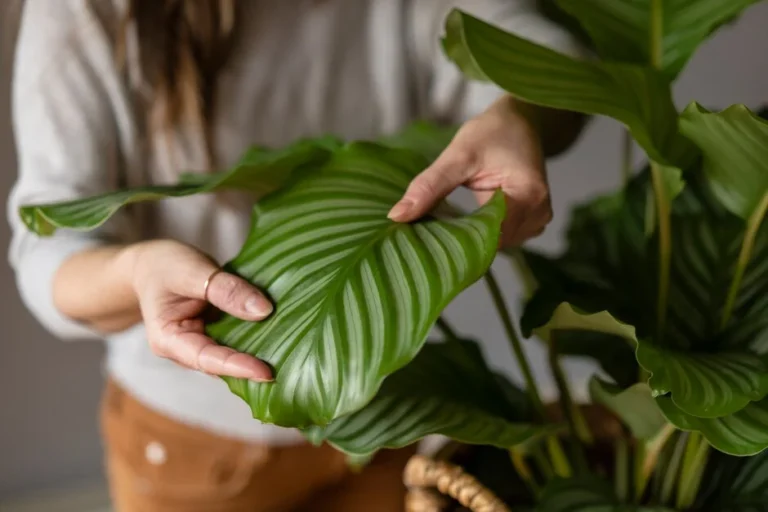How to Care for a Calathea Plant? Calatheas Care Guide
Are you ready to care for your Calathea plant?
Calathea plants, often known by nicknames such as the zebra, peacock, or rattlesnake plant, can be hard to care for when grown indoors. However, they are open about letting you know when they need something necessary for their proper growth.
Therefore, plant owners wondering how to care for a Calathea plant need not worry. They can care for their Calatheas by watering when the top two inches of soil feel dry, giving them a light mist every few days to recreate tropical humidity, avoiding direct sunlight exposure, and placing them under shady areas to prevent temperature extremes.
This guide will provide information on ensuring optimum temperature, humidity preferences, and when to water your plants, along with other additional care tips.
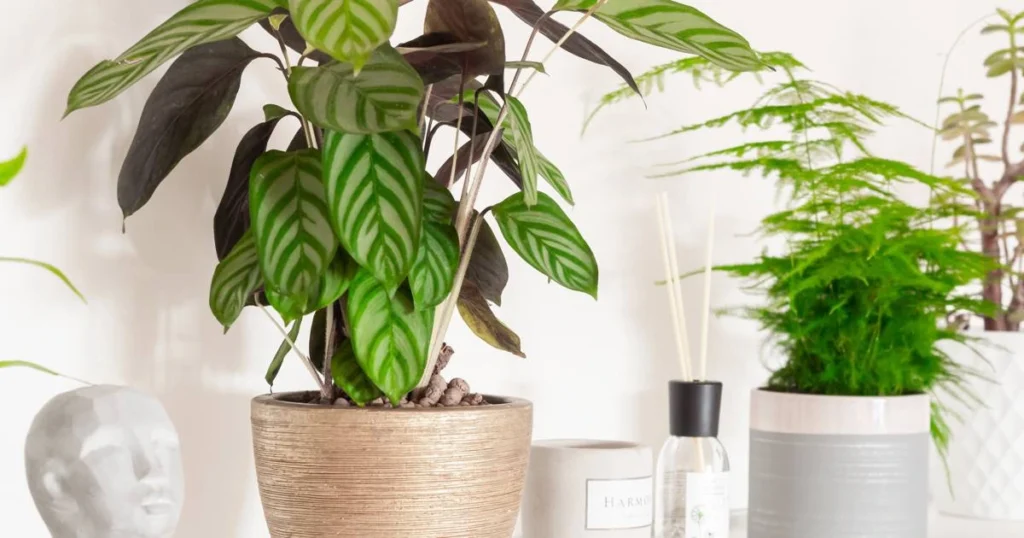
How Do You Care Calathea Plant Indoor
Calatheas are outdoor plants native to tropical climates, and they thrive indoors only when you mimic their natural climate.
They are susceptible to chilly temperatures but grow best in greenhouses, which provide a warm, humid environment. However, as they are small plants only two feet high and don’t take up much space, it is also possible to provide such ideal conditions in homes and gardens.
Just follow these 11 commandments to care for your prayer plant.
1. Water Your Calatheas when the Top 2 Inches of Soil Feel Dry
To answer the question of how often you should water your Calathea plant, give it a long drink of distilled water every 1-2 weeks or when the top two inches of soil are dry.
Water the plants evenly and avoid using tap water, which can cause discomfort. Otherwise, their leaves will start wilting and curling, indicating they are under-watered.
Moreover, allow the soil to dry out between waterings and water the more in brighter light and less often in lower light.
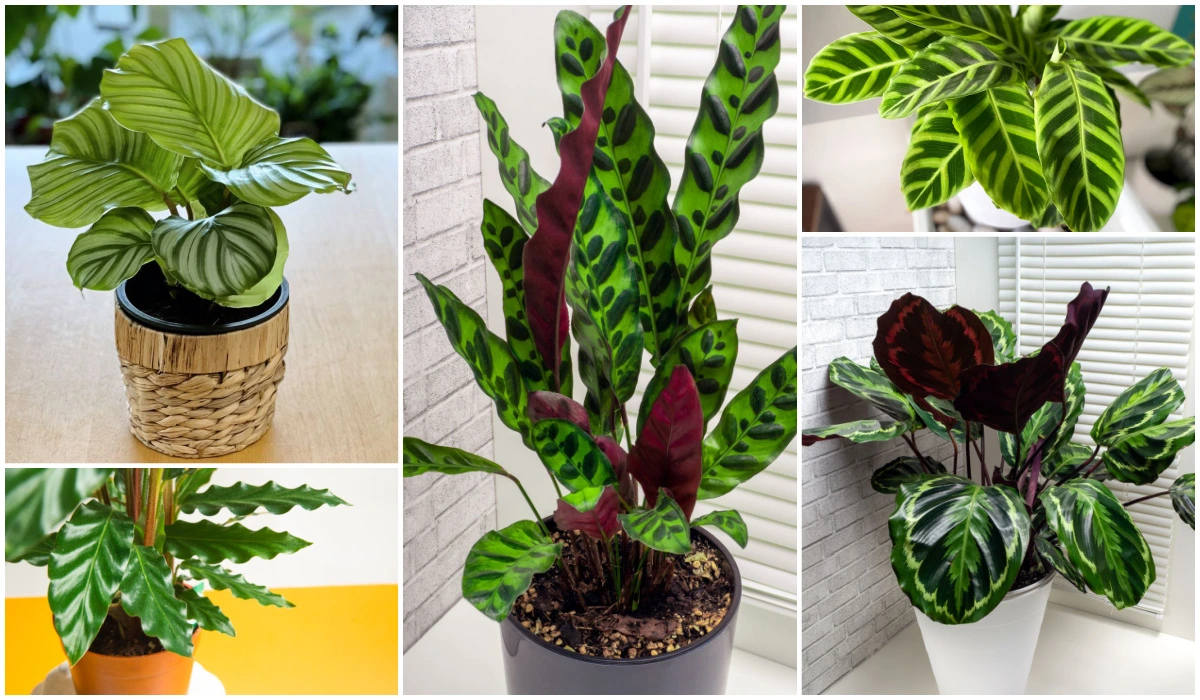
2. Keep Your Calathea Out of Direct Sun
How much sunlight does a Calathea plant need?
Despite their origin in tropical regions, these houseplants prefer filtered bright or low indirect light or shade. So, keep them out of direct light, as exposure to intense sunlight can scorch their leaves and cause their vibrant patterns to fade.
While growing them indoors, place them near east-, south- or west-facing windows or rotate them so the sun hits them evenly, and they can maximize their sun absorbency.
3. Ensure a Steady Temperature Range Between 65°F to 85°F
What temperature does Calathea like the most?
Like many other houseplants, Calathea loves to grow in temperatures that range from 65°F to 85°F (18°C-30°C), mimicking their tropical native habitat. Temperatures below 60°F (15°C) can cause cold damage, and above 85°F (30°C) can scorch their leaves.
Therefore, keep your indoor plants comfortable by ensuring yearly steady temperature ranges.
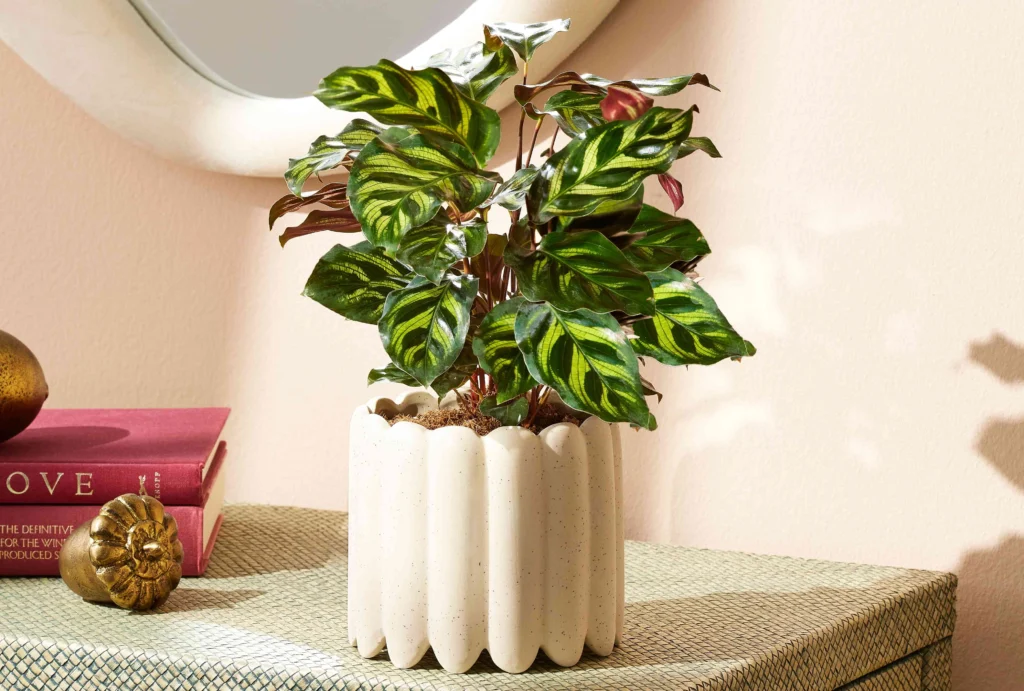
4. Grow Them in Well-Draining, Loamy Soil
What is the best soil for my Calathea plant?
Calatheas love to grow in well-draining, loamy, or humusy potting soil rich in organic matter. A slightly acidic or neutral pH soil is also best.
Look for ingredients like compost, pink bark, coco coir, worm castings, perlite, and peat potting mix for potted plants. These are all rich in nutrients and help maintain moisture.
5. Provide Calathea with 50% or Higher Humidity
Do Calathea Plants Love Humidity?
Calatheas prefer higher humidity levels of 50% or higher. While growing them indoors, you can increase the humidity levels around the plants by:
6. Fertilize Your Calathea in Spring
Calathea, also called prayer plants, don’t need to be fertilized in winter as they have limited growth and metabolism. However, once Spring arrives, your Calatheas will love a monthly dose of foliar plant foods such as Foliar Feed or other gentle fertilizers.
Try not to over-fertilize them, as this can have consequences. Be careful about the particular needs of these beautiful plant varieties.
7. Prune Off Browning or Dead Leaves
Pruning off dead leaves or foliage from your Calathea plant can be an excellent tool for its care. This care practice offers many benefits to the plant’s overall health. Plants will regrow to their full potential if they receive the light and water they need.
You can use scissors or pruning shears to cut the dead foliage at the spot where it meets the stem. If your plant’s leaves have browning tips, you can trim the browning area off by following the natural curve of the leaf with scissors.
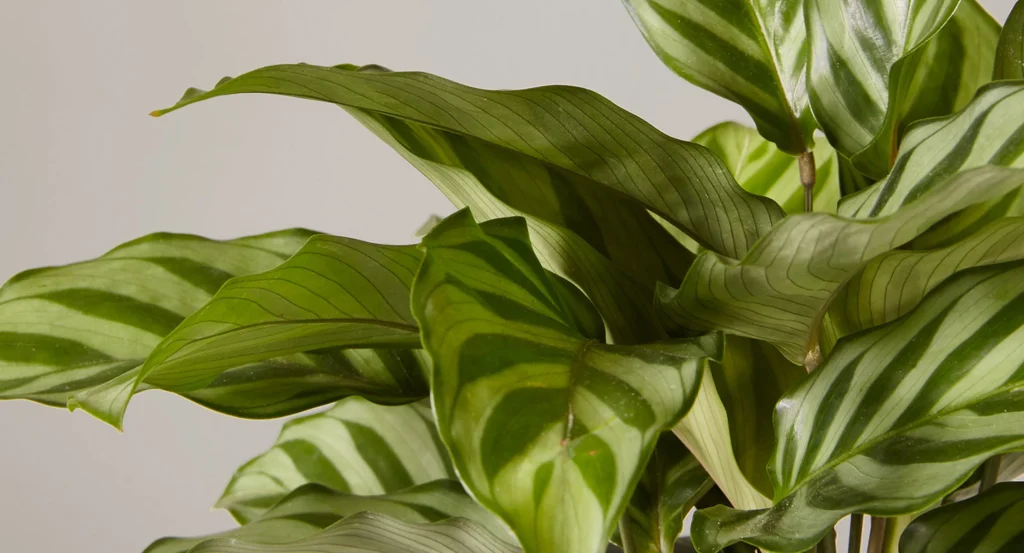
8. Repot Your Calathea to Ensure Better Growth
Repotting your Calathea after every year or two has tremendous benefits. Soil loses its nutrients over time because plants use them to grow healthy and strong. Therefore, repotting them in a new nutrient-rich soil helps them to enjoy. Larger pots provide your plant enough space to spread out and push out new growth.
9. Group Plants Together To Create a Mini-Biome of Moisture
Grouping your plants together creates a mini-biome of moisture that can benefit them all. Grouping your Calatheas with other plants makes it easier to water, feed, and pamper them all!
Ensure that the plants grouped together have enough space and receive adequate light and water. Try to group three plants in one space, as it is harmonious and easy to tend to, especially when you keep your mister and water right by them.
10. Avoid Placing Calatheas Near Vents, Air Conditioners, or Heaters
Calatheas can sense even a minute change in their surroundings, which disturbs their natural environment by reducing humidity and altering temperature ranges. Things causing such changes include:
Therefore, avoid placing your prayer plants near such places and find a shady area or bathroom with humid conditions to put them in.
11. Inspect for Pests and Treat Them with Neem Oil or Insecticidal Soap
Because Calathea are tropical indoor plants and love to grow in humid environments, they are susceptible to fungal attacks. Common pests include aphids, mealy bugs, spider mites, and scales that infest the undersides of leaves.
To minimize their attack, you can treat them using:
- Neem oil
- Horticultural oil
- Insecticidal soap
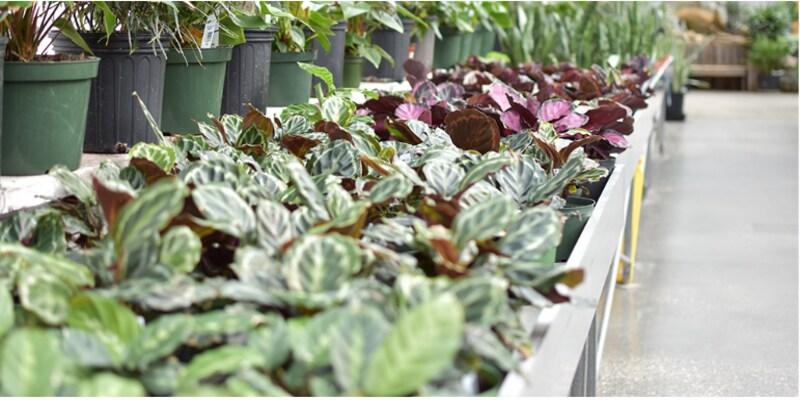
Frequently Asked Questions About Calathea Care
Are Calatheas easy to care for?
Generally, Calatheas are easy to care for and popular for livening up indoor spaces. However, some common problems, such as wilting, curling, yellowing leaves, black leaf bases, wet potting mix, and pest attacks, can make them hard to care for.
How do I keep my Calatheas happy?
You can keep your Calatheas happy by:
Also check about tropical plants care.
Conclusion: How to Care for a Calathea Plant?
Calatheas can be easy to care for by mimicking their natural habitat indoors. Therefore, adjust your care practices by watering them every 1-2 weeks, preventing them from direct sunlight, and ensuring 50% or more humidity. Moreover, fertilizing them in Spring, maintaining temperature ranges by placing them near cold drafts, pruning unhealthy leaves, and choosing the best soil when repotting also help you care for your Calatheas.

About Author
Hi, I’m Emily Davis, a passionate tropical plant enthusiast dedicated to sharing knowledge and expertise with plant lovers. Through his blog, I will provide guides, tips, and tricks for caring for tropical houseplants species like Alocasia, Anthurium, Calathea, Philodendron, Begonia, and many more that will help readers bring a touch of paradise into their own homes. With a deep love for the vibrant colors and lush textures of tropical flora, I’m committed to inspiring others to cultivate their own tropical oasis.

